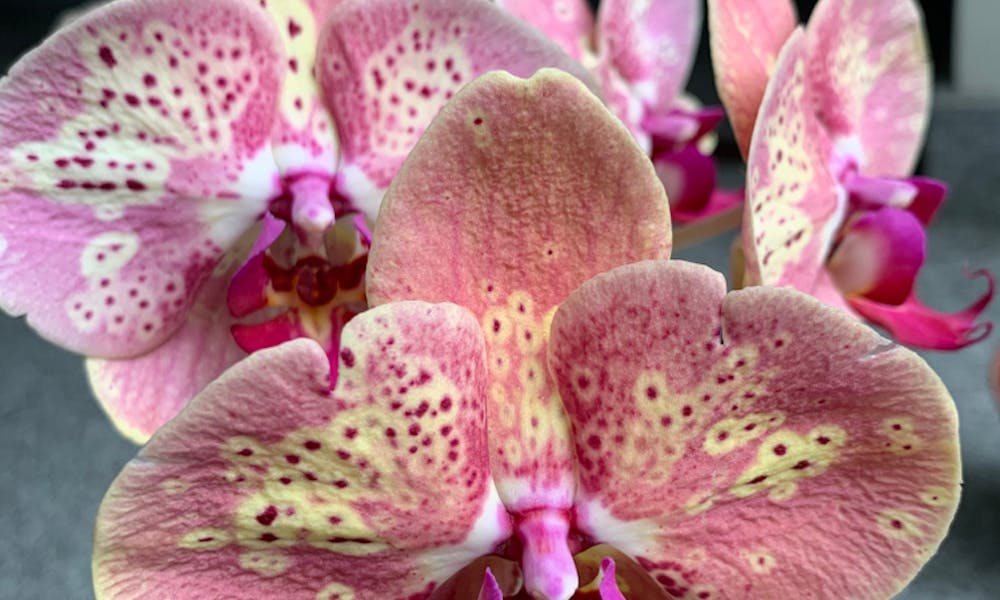MENU
How to Rebloom Orchids: A Brief Guide

Orchids are magical, beautiful flowers that are suitable for home decoration or bouquets for any occasion, adding grace and elegance. How much your orchid blooms depends on how much time you spent caring for it and how well you know its natural habitat, so you can recreate it. The flower is quite challenging to maintain because it requires a lot of patience on your part. So, in this article you can read about:
* How to grow orchids
* The reasons why your orchid doesn’t bloom
* Tips to help you rebloom orchids
How to Grow Orchids
Orchids are extremely popular as home plants, but helping them bloom requires some effort on your part; especially, it is all down to a few factors you need to consider. Their habitat develops great influences on the healthy maturation of the plant. However, they are very easy to care for if you become familiar with their needs.
One of the most important factors when growing orchids is to provide the right amount of sunlight. Thus, give your plant the correct lighting conditions by placing it next to the windows of your house that are facing east and west. If you are unable to do so, then fluorescent light may also work well. It is a sign that in the room there is too much direct sunlight if your orchid’s leaves start to turn black at the tips. The leaves are burned and necessarily the flower should be moved to another room that is less sunny.
The optimal development temperature of your orchid is 65-75 degrees F. They withstand the night at temperatures of 60 degrees. Also, they can accept in time, up to 85 degrees, but this depends very much on which variety of orchid you grow. It is better to avoid extreme and sudden changes in temperature, so it is advisable to keep the orchid indoors.
The best method of watering an orchid once per week is to remove it from the stern and place it in a plastic pot of cultivator. Then, put the plant right under a tap for about 15 minutes. Make sure the whole plant is watered slowly, without touching the leaves and crown. The orchid can also be moistened by placing ice cubes in the soil. Before placing the orchid in the original pot, allow it to drain for a maximum of 10 minutes.
Once the orchid flowers stop appearing, it enters a resting stage of about six to nine months. In this dormancy stage, the plant starts replacing all the nutrients that it used up for the flowering process. Then normally, the orchid should have the energy to bloom, to revive.
Sometimes it happens that with all your care and help, the orchid does not bloom anymore.
The Reasons Why Your Orchid Doesn’t Bloom
Here are some reasons why your orchid is no longer blooming:
* Not enough light or too much light. Orchids must have indirect access to sunlight. Without such conditions, the plant suffers and it is not likely to bloom. Strong, direct sunlight burns the orchid leaves. This is the reason for which the orchids should be kept in places where sunlight is indirect.
* Temperature. Orchids should be kept indoors because they need a constant temperature between 65-75 degrees F.
* Too much water or too little water. When you notice that the orchid leaves are drooping or the roots are browning, these are signs that the orchid has received too much water. In this case, it should be left for about a week, and then it must be watered again. If the leaves of your orchid look dry, then the orchid certainly needs water.
* Flowering season. In contrast to the most garden flowers, orchids bloom best in the autumn. If you want your orchid to thrive in the summer, then you should pay more attention to it.
* Repotting. When the roots of your orchid are very developed and exceed the container, or these look brown, then the orchid should be repotted.
Tips to Help You Rebloom Orchids
Once the orchid has entered the dormancy phase, begin fertilizing the soil with a balanced fertilizer for house plants. Fertilization should be done weekly or monthly, depending on the type of orchid you have. A phosphorus-rich fertilizer favors the reblooming of your orchid for flowering. After the first flowering bud appears, you should return to the usual fertilizer.
Light is essential to your orchid. If the orchid is placed next to a window in the east of your house, it is not a problem for reblooming, but if the orchid is raised with lights, then these lights should try to mimic the sun cycle. The lights should be left lit for a longer period in summer and a shorter period in winter. The dark green color of the leaves of the plant is the best indicator that the plant had insufficient light.
The right temperature for blooming for orchids is about 60-65 degrees Fahrenheit, so if it is too warm in the house, move the plant to a room where you can leave an open window in the night and should close it in the morning. This means that you can mimic their natural habitat, where temperatures drop at night.
After the appearance of the first flowering buds, wait a few months for the plant to reach a height of 5. After reaching this size, begin to support its tip. If a few months pass and you do not see the appearance of any flower, try to move the orchid to another location. If you are lucky, your orchid should bloom twice a year.
Thus, caring for an orchid is a simple process, but it is all down to the best location. They are beautiful, and they can be an excellent gift for any occasion.

